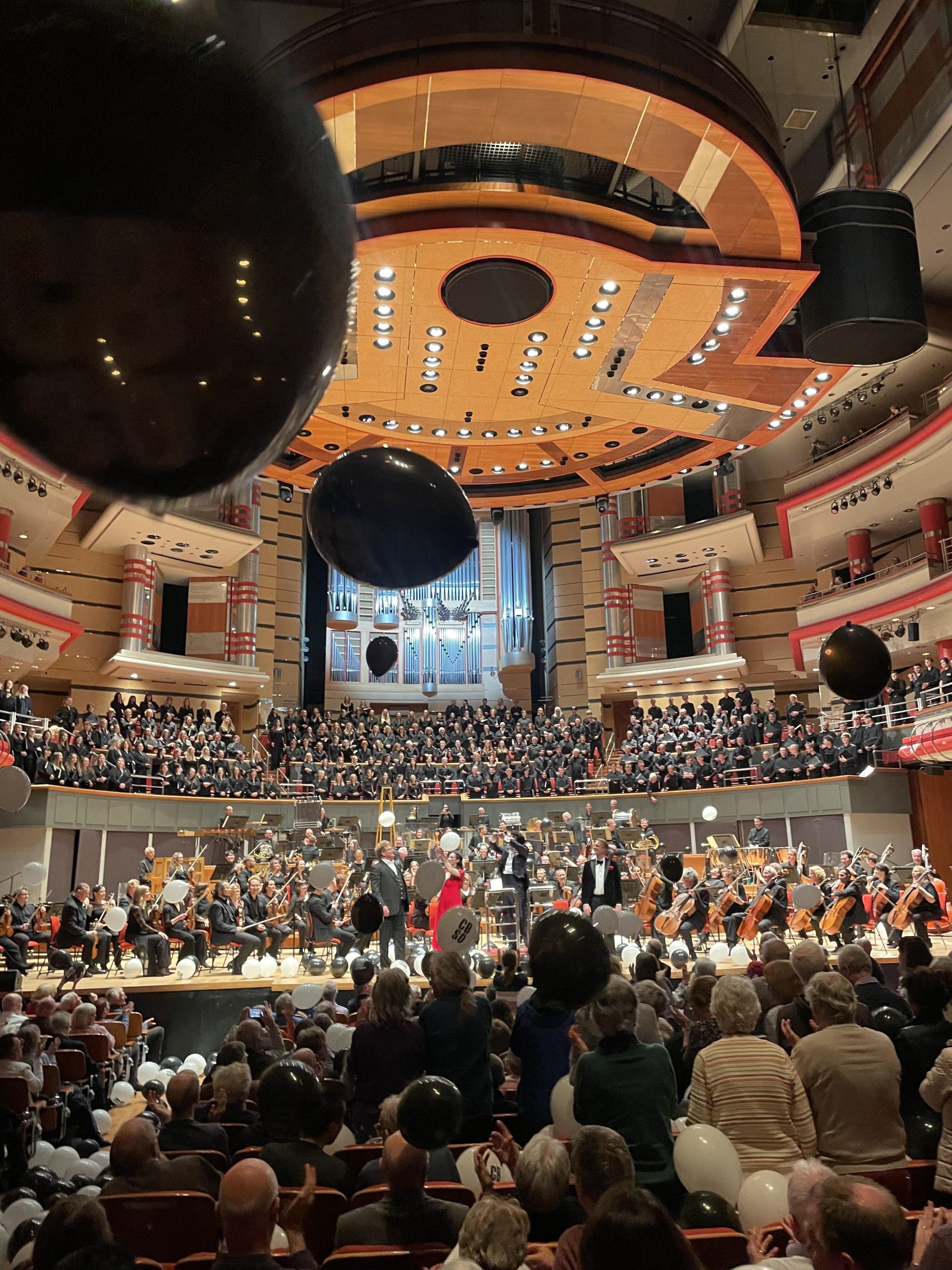
Music Critic Caitlin Gaul reviews the CBSO’s performance of Carmina Burana, which she sang in with University of Birmingham Voices
Each year, the auditioned choirs at the University of Birmingham come together to form ‘University of Birmingham Voices’ and have the opportunity to sing in the Birmingham Symphony Hall with the City of Birmingham Symphony Orchestra (CBSO) and Chorus. As a member of the choir, I have been lucky enough to sing in a few of these concerts during my last four years at university, which always prove to be memorable, but the most recent was nothing short of spectacular.
At the end of April, the CBSO launched a new brand and welcomed their new Chief Conductor, world-renowned Kazuki Yamada, with a bang: Carl Orff’s Carmina Burana. You may recognise this iconic piece of classical music’s first, and last, movement, ‘O Fortuna’, from pop cultures such as adverts and tv shows (most notably the X Factor results show theme), often used for dramatic effect. The powerful harmonies of the opening bars, with the thumping percussion and brass of the orchestra underneath, followed by rhythmic and ominous whispered staccato verses, increasingly build tension and are enough to give any listener goosebumps. It is no wonder why this timeless track sits atop the BBC’s list of most widely heard pieces of classical music.
It is no wonder why this timeless track sits atop the BBC’s list of most widely heard pieces of classical music.
After a few short weeks of intense rehearsals, the University of Birmingham Voices joined with the orchestra and CBSO Chorus, and Youth Chorus to bring everything together under the instruction of newly appointed Kazuki. With a sold-out Symphony Hall (a 2,262-seat venue) confirmed an obvious buzz electrified rehearsals as the final improvements were made and the Bavarian accented Germanic-Latin of the music’s text was polished.
As the lights dimmed in the hall and that recognisable sound of an orchestra warming up faded, Kazuki bounced out onto the stage to huge applause. Taking the mic and proceeding to woo the audience in his first address as Chief Conductor, he charismatically introduced the pieces of the concert and gave heart-warming anecdotes about his elderly mother who had flown from Japan for the special occasion. The first half of the concert saw the CBSO play out Polish composer Andrzej Panufnik’s 22-minute ‘Sinfonia Sacra’, an impressive orchestral piece that steadily grew as four anthemic trumpeters sounded out a fanfare from the back of the stage.
Filing into the choir stalls after the interval, the energy of the Symphony Hall was palpable as over 400 performers positioned themselves around the stage. Under Kazuki’s baton, the anthemic Carmina Burana began as each musician put all their energy and might into each movement of the immense piece. The mood, pace, and energy of this 65-minute work shift in every direction as the text tells stories of the wheel of fortune, the cycle of life, drinking in taverns, rowdy dances, courtly love, and even a lamenting swan on a spitfire. Kazuki’s infectious energy drove the orchestra forward and directed each performer with immaculate precision as he guided all corners of the stage through the beautiful chaos of Orff’s composition. A personal highlight was a moment in the 22nd movement entitled ‘Tempus est iocundum’, in which catchy bars that sing ‘Oh, oh, oh, totus floreo’ in a chipper way are repeated by the baritone soloist and the Children’s choir, with a final rendition involving all performers. Kazuki jumped off of his conductor’s platform and bounced jovially around the stage, as the orchestra stopped playing and even joined in with the light-hearted singing.
As the choir sang out the mighty final note of the piece and the strings lifted their bows, Kazuki rounded off ‘O Fortuna’ for the second and final time, with the audience immediately erupting into a standing ovation of whoops, cheers, and whistles. At precisely this moment, and to the surprise of everyone in the room, hundreds of balloons were released from above, floating slowly onto the audience below and adding to the already celebratory and elated atmosphere of the room. The applause did not fade for a while as both performers and audience alike soaked up the convivial spirit of the Symphony Hall and enthusiastically threw the balloons around.
The applause did not fade for a while as both performers and audience alike soaked up the convivial spirit of the Symphony Hall
The Symphony Hall offers an array of ticket offers, such as £5 tickets for students and young people. It is clear in the work that this historic institution does that it has community at its heart and has a mantra of making classical music as accessible as possible. Kicking off this relaunch of its brand with Carmina Burana and Kazuki’s vigour and dynamism felt like the perfect way to do it. As a piece that acknowledges the rapid passing of time, it felt fitting on a personal level that it was the final piece of music that I would sing with the choir as a University of Birmingham student, and it was an opportunity I was immensely grateful to be part of.
Enjoyed this? You might also enjoy:
Comments